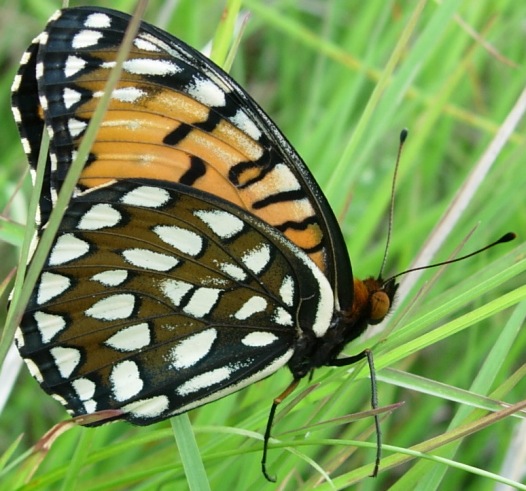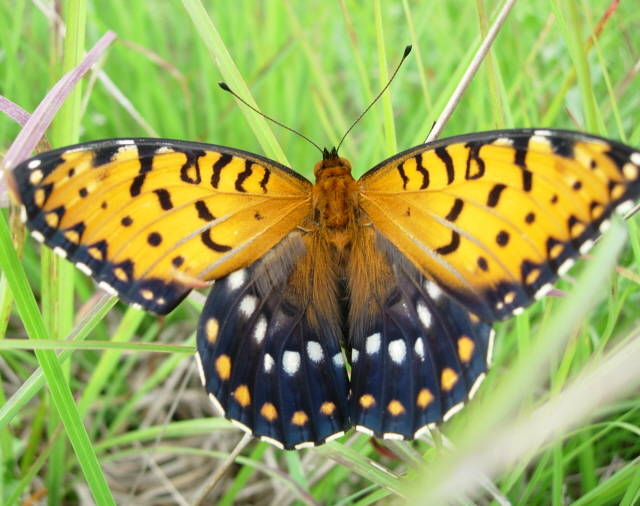|
| Common Name | Regal Fritillary by Shay Garriock => sw VA
[View PDF]
 Click to enlarge Click to enlarge
[Google Images] GBIF [Global Distribution ] BoA [Images ] iNaturalist |
| Scientific Name | Argynnis idalia
|
| Link to BAMONA species account. |
| Map | Click on a county for list of all database records for the species in that county.
 |
| Distribution | DISTRIBUTION: Considered now to be extirpated in NC. Formerly found in the extreme northern Mountains, south to Avery County. Records only from Avery, Ashe, Alleghany, and Wilkes counties in NC.
|
| Abundance | ABUNDANCE: Formerly (prior to 1970) rare or uncommon; however, the species is presumed extirpated in NC. One was reported in the Roan Mountain vicinity of Avery County in early September 1994; it might well have been a stray from a colony in southwestern VA. However, the Roan Mountain site has been worked on numerous occasions since, with no luck at finding this large and easily identified species.
|
| Flight | FLIGHT PERIOD: A single brood; mid-June to mid-September, and perhaps later into September or early October.
|
| Habitat | HABITAT: Extensive open country, such as wet meadows and pastures. Preferably in moist situations and with large number of flowers for nectaring (such as milkweeds), but also present in extensive upland fallow fields and pastures. The 1994 report was from a mountainside meadow with an abundance of wildflowers.
|
|
| | Plants | FOOD AND NECTAR PLANTS: Various violets (Viola spp.) are the foodplants; nectar plants are commonly milkweeds (Asclepias spp.), but others are also used.
|
| Comments | COMMENTS: The NC Natural Heritage Program (NC NHP) was ecstatic to hear about a sighting of a worn individual seen in September 1994 by a U.S. Forest Service biologist. It gives hope that other Regal Fritillaries still lurk in the northern Mountains, where much suitable habitat seemingly still exists. However, conversion of meadows and other grasslands to Christmas tree plantations is presumably impacting this species. Its great demise in the Eastern states is unprecedented among butterflies. It has been recorded from dozens of counties in western VA, but as of 2023 it seems to now be extirpated from that state. Interestingly, 50+ individuals were counted in one of those VA sites in 1999, and there was a 1999 sighting (of a stray?) in Grayson County, right across the NC border. The finding of a single individual, much less a viable and reproducing population of Regals, in NC seems highly unlikely now. In 2012, NC NHP moved the State Rank from SH (Historical) to SX (Extirpated). It is now known in the Eastern states from just one large colony in central PA, though it is fairly widespread in Great Plains states.
|
State Rank | SX | | State Status | SR |
Global Rank | G3? | | Federal Status | |
| Synonym | Speyeria idalia
|
| Other Name |
|
|
|

 >>
>>